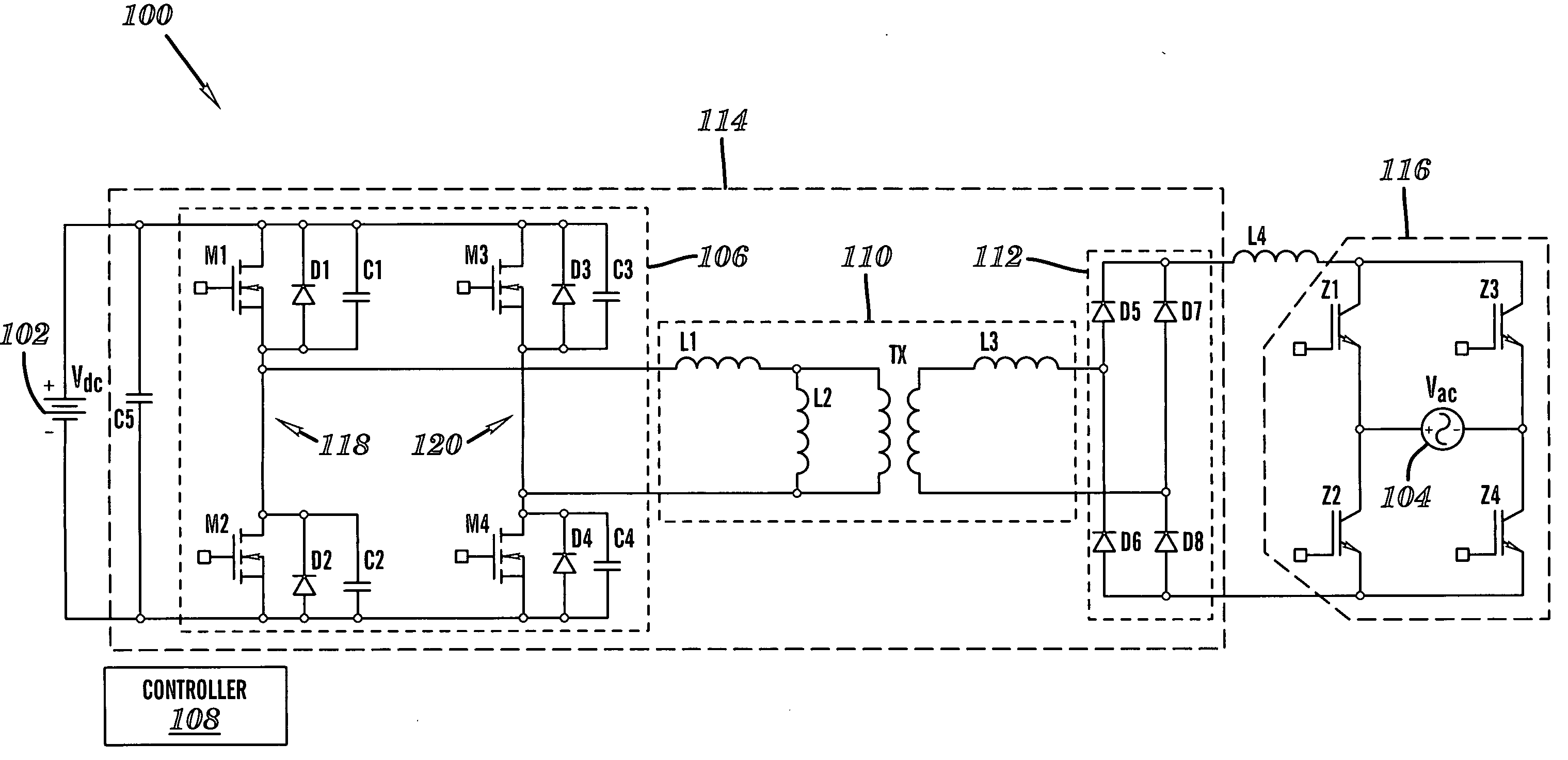Inverter topology for utility-interactive distributed generation sources
a distributed generation source and utility-interactive technology, applied in the field of inverters, can solve the problems of limiting the power level to relatively low levels, reducing the overall efficiency of the system, and being impractical compared to other inverter technologies, so as to reduce the number of parts, reduce the cost, and maximize the interaction
- Summary
- Abstract
- Description
- Claims
- Application Information
AI Technical Summary
Benefits of technology
Problems solved by technology
Method used
Image
Examples
Embodiment Construction
[0033]FIG. 6 illustrates an improved inverter system 100 in accordance with the present invention. In FIG. 6, Vdc 102 represents the source of direct current (dc). Vdc 102 may comprise one or more solar photovoltaic cells, a fuel cell, the rectified output of an alternator, a battery, a supercapacitor, etc. Vac 104 represents the alternating current (ac) utility. Switches M1-M4 on the input side form a phase-shifted input bridge 106, and may comprise metal oxide semiconductor field effect transistors (MOSFETs), a type of fully controllable semiconductor switch. Diodes D1-D4 and capacitors C1-C4 represent the body diodes and output capacitors of the MOSFETs M1-M4, respectively. That is, D1-D4 and C1-C4 are parasitic elements contained within the MOSFETs M1-M4. One skilled in the art will appreciate that other types of semiconductor switches can be used instead of MOSFETs, however, it may be necessary to use discrete physical components to emulate the parasitic elements (i.e., D1-D4 a...
PUM
 Login to View More
Login to View More Abstract
Description
Claims
Application Information
 Login to View More
Login to View More - R&D
- Intellectual Property
- Life Sciences
- Materials
- Tech Scout
- Unparalleled Data Quality
- Higher Quality Content
- 60% Fewer Hallucinations
Browse by: Latest US Patents, China's latest patents, Technical Efficacy Thesaurus, Application Domain, Technology Topic, Popular Technical Reports.
© 2025 PatSnap. All rights reserved.Legal|Privacy policy|Modern Slavery Act Transparency Statement|Sitemap|About US| Contact US: help@patsnap.com



